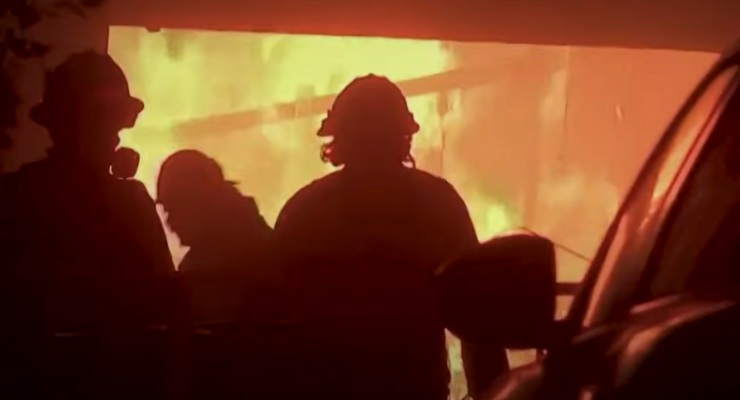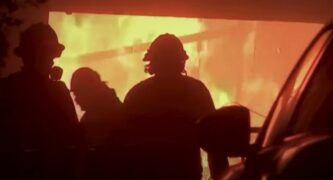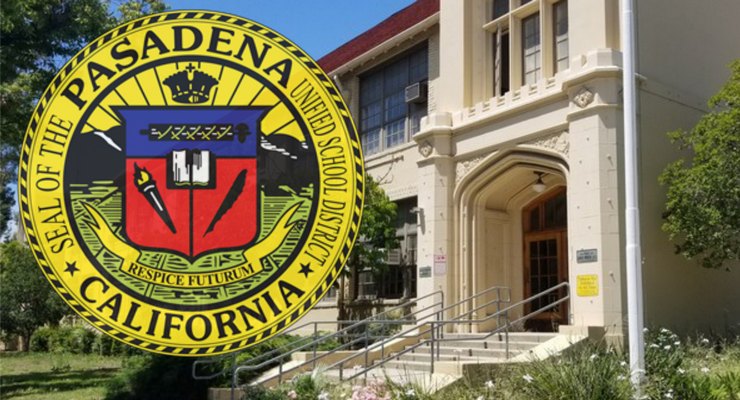
A documentary on the Eaton and Palisades fires from the perspective of firefighters and law enforcement, spotlighting never-before-seen footage, is available on YouTube Friday and at https://www.
Representatives from the Association for Los Angeles Deputy Sheriffs, Los Angeles County Firefighters local 1014, and the Los Angeles County Lifeguard Association held a press conference at Triangle Park in Altadena Thursday to announce the release of “Resilience: The Untold Stories of LA County First Responders,” which was produced by unions representing Los Angeles County Fire Department firefighters, Los Angeles County Sheriff’s Department deputies and county lifeguards.
“People in the county of Los Angeles see what we do for them on sunny days, but this footage, this story, shows a different side of our work that the public rarely sees,” said Greg Crum, president of the Los Angeles County Lifeguard Association.
The nearly 35-minute documentary combines footage from body-worn cameras, social media videos, news coverage and interviews with first responders.
“Resilience: The Untold Stories of LA County First Responders” opens with a scene overlooking Pacific Palisades, homes and other structures burned to the ground. It quickly changes to footage of a single-family home on fire, followed by a series of short clips from television news coverage.
First responders recalled feeling the extreme heat and witnessing as flames grew bigger and bigger — exploding over the night on Jan. 7 due to the unprecedented Santa Ana winds.
“The first two days of the fire were very chaotic,” Steve Johnson, president of the Los Angeles County Professional Peace Officers Association, said in the documentary. “It was an extreme draw on resources.”
The staffing challenges were particularly acute for law enforcement, with the Sheriff’s Department currently operating with a deficit of over 1,500 deputies below full staffing levels.
“There’s critical staffing shortages and vacancies, and so deploying to these specific fires, it was a big heavy lift on our department, and yet we were still able to respond in a very effective manner,” Johnson added.
Richard Pippin, president of the association for Los Angeles deputy sheriffs, emphasized the toll these shortages have taken: “Our people are exhausted.” Pippin noted that the staffing crisis continues to be a concern as the department works through contract negotiations with county officials.
Los Angeles County Fire Department Capt. Dave Gillotte, president of the Los Angeles County Firefighters Local 1014, said in the documentary that “this fire, what firefighters experienced was different in that the sustained winds that we saw 80, 100 miles an hour, pushed through densely populated communities.”
“And then that fire came roaring through. I thought we’re going to have a fire that we haven’t seen in quite some time, and it’s going to be destructive,” Gillotte added.
Gillotte explained that the Eaton and Palisades fires were just two of seven major fires that were burning simultaneously across LA County. “at one point we recalled 100% of the force back to work…Some were long retired and came back to work and others had just finished a shift, but turned around to go back to the station to get on any piece of equipment we had to get back out and battle the flames.”
“The fires are long extinguished, but the health dangers will remain. And as a union, our job does not end after the fire line. It continues in offices and hospitals and in the hallways of our state and federal lawmakers,” Gillotte stated at the press conference.
Emphasizing the long-term dangers, Gillotte said, “I can say to you confidently that it’s not a matter of whether or not some firefighters will die from these fires. It’s a matter of when.”
Greg Crum, president of the Los Angeles County Lifeguard Association, described how lifeguards played a crucial role beyond their typical duties.
“When the fire tore through Malibu Topanga in the Pacific Palisades, We were not just watching from the towers. We were out there on the front lines. Evacuating residents, and assisting our brothers and sisters in the fire service and in the sheriffs departments, moving people and animals to safety,” Crum said. “The lifeguards were deployed to support public safety communications for the unified command between agencies.”
Crum emphasized that the documentary aims to show the reality of their work, adding, “This video is not about heroes, it’s about what really happened, and how committed we are to serving the people of LA County on every front.”
In part, the documentary highlighted how wildfire seasons have grown longer and more destructive. It also focused on challenges first responders faced battling the fires, and the ongoing health consequences they continue to face in the aftermath.














 3 comments
3 comments


